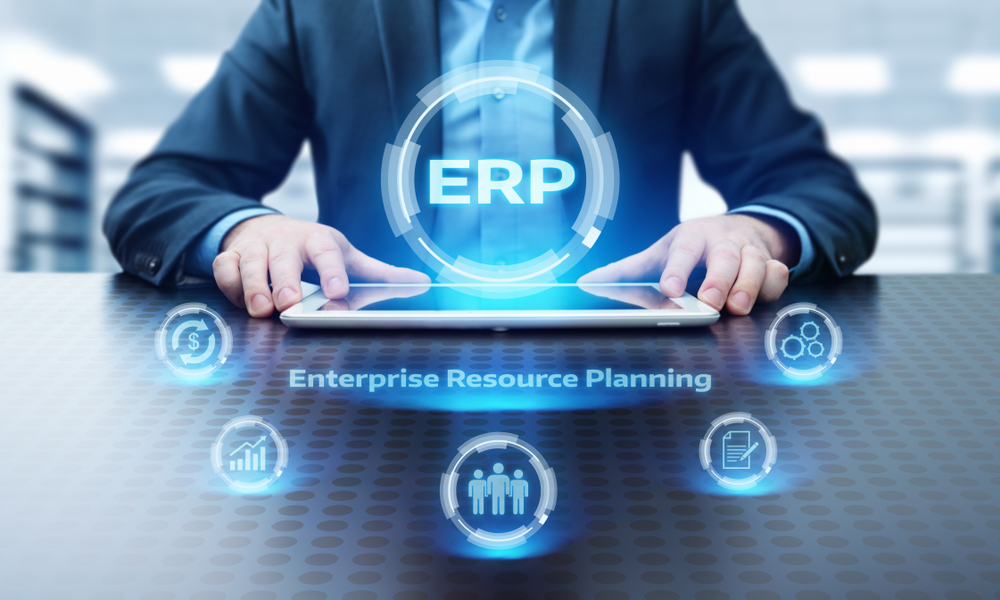Blog
ERP: When and How to Upgrade Your System
When analyzing the effectiveness of your ERP system, consider the following questions:
- Are you relying on multiple systems and software solutions to manage your business?
- Do you feel a lot of time is being wasted on manual processes and data input?
- Do your current business systems suffer from an obvious lack of features, slow or glitchy performance, reduced support, or potential security issues?
- Is it overly complex and difficult to onboard new staff, set up new reports, or find, access, and use accurate data?
- Are you missing out on sales because you don’t have the right products in stock or can’t get orders to customers quickly enough?
- Are you running at 100% capacity and don’t know how to grow your business without expanding?
- Do you seem to not be making as much money as you should within certain channels or with certain customers?
These are all signs that it might be time to upgrade your ERP system.
While e-commerce, machine learning, AI, and the cloud have been front-of-mind topics in recent years, today’s economy means that, no matter what industry, and no matter whether you are a manufacturing or service company, having a robust ERP platform is a top business priority.
Right now, many of our clients are considering upgrading their ERP systems to strengthen their supply chains, upgrade their supply chain management capabilities, improve operating efficiency (countering inflationary pressures), and maximize production / service delivery capacity, thereby enabling future growth.
strengthen their supply chains, upgrade their supply chain management capabilities, improve operating efficiency (countering inflationary pressures), and maximize production / service delivery capacity, thereby enabling future growth.
We’ve been involved in and have led multiple ERP upgrades and implementations. Their impact on business performance and metrics (e.g., service levels, inventory and materials days on hand, margins, etc.) has been transformative. This enables measurable growth in revenue and profit, with clear returns on the efforts and investment.
However, approaching your ERP upgrade the wrong way can be catastrophic. ERP implementations are typically time consuming and complex, and botched ERP implementations have been known to decrease supply chain visibility, tank revenue and profit, and drive ongoing incremental complexity and expense. In fact, some estimates indicate that three-quarters of ERP transformations fail to stay on schedule or on budget, and around two-thirds of ERP upgrade projects have a negative return on investment.¹
So if you are considering upgrading your ERP system, and want to avoid the potential pitfalls, what should you do?
With collective experience in ERP implementation spanning hundreds of years, the Core Catalysts team have identified five critical factors that consistently contribute to success.
Strong SI vendor selection and management
Most ERP software providers do not sell directly to customers, relying on Systems Implementation (SI) partners for all but the largest customers. While there are many high-quality ERP SI’s out there, we have found that there are also a lot of mediocre ones, so much so that we often say that SI selection is as important as ERP system selection.
Equally, we have seen many companies assume that their ERP SI will not need a lot of management once they have been selected. Unfortunately, too many times have we seen a “fox guarding the hen house” situation develop, where the incentive for the SI to increase scope and duration (and thereby, fees) becomes too much for them to resist.
Therefore, critical factor number one for successful ERP implementations is strong SI vendor selection and management.
Strong Project Management
 Linked to the first critical success factor, we have seen many ERP implementations fail due to an organization’s lack of experience in managing major IT projects and multivendor programs.
Linked to the first critical success factor, we have seen many ERP implementations fail due to an organization’s lack of experience in managing major IT projects and multivendor programs.
ERP projects in particular benefit from rigorous project management systems, protocols, and governance, meaning that there is typically a strong ROI from bringing in an outside consultant like us to help project manage implementation.
Equally, investment in outside project management help has the dual benefit of reducing “stresses” to the organization that can arise from having internal subject matter experts divert time and attention away from their “day jobs” towards managing an ERP implementation.
So, critical success factor number two is strong project management.
Investment in Requirements Gathering/Generation
Similar to the second critical success factor, many organizations fail to understand the level of input needed from business sponsors to successfully define the requirements (i.e., the functionality a system needs to have and the scope of what the system needs to be able to do) and struggle to manage the multiple, complex, detailed discussions needed, even when they have adequate resources and capabilities internally to do this (which they often don’t).
Frequently we see clients rush headlong into an ERP implementation without taking adequate time or effort to answer important requirements questions around items such as operating models, workflows, and processes, or considerations such as data management and validation rights. Subsequently, this often leads to mid-program issues (and schedule and cost overruns) that undermine confidence in the project, as well as the potential for the ERP implementation to deliver positive operational and financial returns.
This is why Core Catalysts often includes assistance in requirements gathering/generation upfront within an ERP implementation project as part of our project management approach. This is also why many of our clients see a strong ROI in engaging us within ERP implementation projects.
A good example of this is how frequently we are able to reduce both the upfront implementation expense and ongoing operating expenses of new ERP systems. We do this by helping clients maximize the usage of standard configurations and out-of-the-box functionality. By focusing and aligning client stakeholders on business requirements, we are able to reduce the number of customizations that often drive both costs and complexity!
Therefore, critical success factor number three is investment (of both time and money) in requirements gathering/generation at the beginning of an ERP implementation.
Investment in Change Management
Similar to the third critical success factor, many organizations fail to understand the importance of investing in “change management” (including training, communications, and user acceptance testing) in order to achieve the projected benefits of an ERP system upgrade.
Many times, we have seen projects sponsors query the dollar value of the “change management” line item in an ERP implementation budget. They see it as a cost to be reduced versus the investment that it actually is. Investing in change management helps to drive faster speed of adoption, higher ultimate utilization, and greater proficiency which all generate measurable and meaningful financial returns.
Time and time again, we see a high correlation between investment in change management and ultimate achievement of projected financial and organizational benefits from ERP upgrades. Skimping on change management is a false economy!
Focus on Business Value / Benefits
 It is very easy to get caught up in the technological considerations surrounding the business case for an ERP implementation. Your system is old, it doesn’t work quite how you’d like it to, processes are manual, etc.
It is very easy to get caught up in the technological considerations surrounding the business case for an ERP implementation. Your system is old, it doesn’t work quite how you’d like it to, processes are manual, etc.
However, unless these issues are mission critical (i.e., they are threatening the long-term sustainability and success of your organization), it is important to identify the business value/benefits of any proposed investment in a new (or upgraded) ERP system.
Too often, we see companies spend most of their time on roadmaps, activities, and deliverables, and too little time on the business case when considering whether or not to invest in an ERP implementation. If a business case is not well quantified, documented, and monitored during and after the implementation, is it any wonder so many ERP projects fail to deliver positive returns on investment?
This is why our successful ERP implementations balance the technological considerations and unmet business needs / opportunities with a strong eye on developing a business case. This leads to delivery of the business value/benefits that underpinned the original investment decision.
In conclusion, with good SI selection and management, strong project management, upfront investment in requirements gathering/generation, and a focus on business case/value creation, upgrading your ERP system can be an important enabler of business growth and maintaining and improving your business performance.
If you’d like to discuss how Core Catalysts might be able to help you decide whether or not it is time to upgrade your ERP system, or how we can help you in implementation, please give us a call!
-Core Catalysts Team
¹Casanova, Lohiya, Loufrani, Pacca, and Peters (2019), “Agile in enterprise resource planning: A myth no more”, McKinsey & Company

